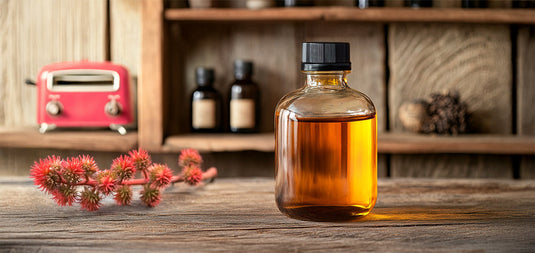Crafting Castor Oil
Castor oil, derived from the seeds of the castor oil plant (Ricinus communis), has been prized for centuries for its multifaceted utility, spanning from medicinal to industrial fields. The journey of extracting this versatile oil is a sequence of precise procedures, each pivotal in safeguarding the purity and excellence of the end product.
-
Harvesting and Purification
The inception of castor oil extraction commences with the gathering of castor seeds from the castor oil plant. Typically flourishing in tropical or subtropical climates, these seeds are harvested at their peak maturity. Subsequently, a rigorous cleansing process ensues to rid the seeds of any extraneous matter a debris, ensuring the integrity of the oil when moving on to the following steps.
-
Drying and Priming
Post-cleansing, the seeds may undergo a drying regimen to diminish their moisture content. This drying phase serves not only to preserve the seeds but also to optimize the efficiency of the extraction process. Reduced moisture levels stops mold growth and facilitate the subsequent crushing or milling phase by enhancing the seeds' texture and handling properties.
-
Pressing or Milling
Upon attaining the necessary level of dryness, the seeds are pulverized or milled to fragment them into smaller particles. This crucial step, often executed via mechanical crushers or grinding apparatus, augments the seeds' surface area, thereby streamlining the oil extraction process. Fragmenting the seeds into finer particles renders the oil more accessible, heightening the efficacy of extraction.

-
Extraction
The crux of castor oil extraction resides in the extraction stage, wherein the pulverized or milled seeds undergo mechanical pressure to expend the oil. This extraction process may be conducted through diverse methods, encompassing hydraulic presses or expeller presses. Hydraulic presses exert formidable pressure on the seeds, forcing the oil to seep out, while expeller presses leverage a screw mechanism to achieve a similar outcome. No matter which method is utilized, the objective remains consistent: to extract maximal oil yield from the castor seeds.
-
Refinement
Following extraction, the crude castor oil undergoes refinement to eliminate any solid residues, debris or impurities. This pivotal refinement phase ensures the purity and clarity of the oil, eradicating any residual contaminants that might have survived from the extraction process. Refinement may entail utilization of specialized equipment or rudimentary straining techniques, contingent upon production scale and quality requirements.
-
Optional Enhancement
Tailored to intended application and quality specifications, the extracted oil may undergo supplementary processing stages. These can encompass refining, bleaching, or deodorizing procedures aimed at enhancing purity, hue, and fragrance attributes. Though discretionary, these steps are frequently employed to align with industry benchmarks or consumer preferences.
-
Packaging and Distribution
Upon culmination of extraction and refinement phases, the pristine castor oil is meticulously packaged for dissemination and commerce. Typically ensconced in opaque vessels to shield it from light-induced degradation, castor oil traverses global markets, finding utility across an array of sectors, including pharmaceuticals, cosmetics, and manufacturing.
The craft of extracting castor oil is a meticulous endeavor, encompassing harvesting, purification, drying, pulverization, extraction, refinement, and optional enhancement. Through this sequence of steps, the invaluable oil is gleaned from castor seeds, primed to serve a plethora of roles across diverse industries.
Explore our selection of Castor Oil Here. Our Castor Oil is cold pressed into dark bottles to protect against light degradation which extends shelf life!
Review our Disclaimer Here.










